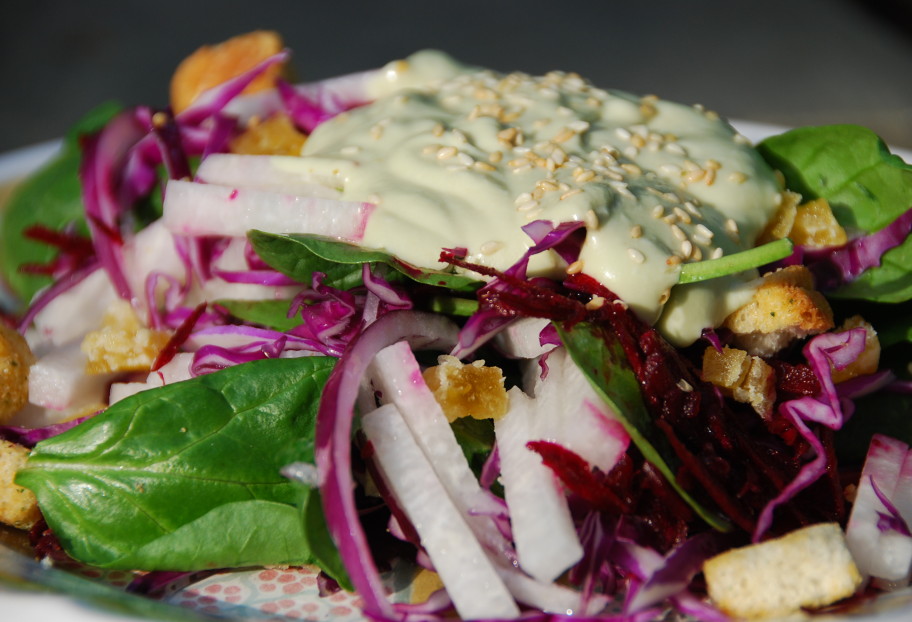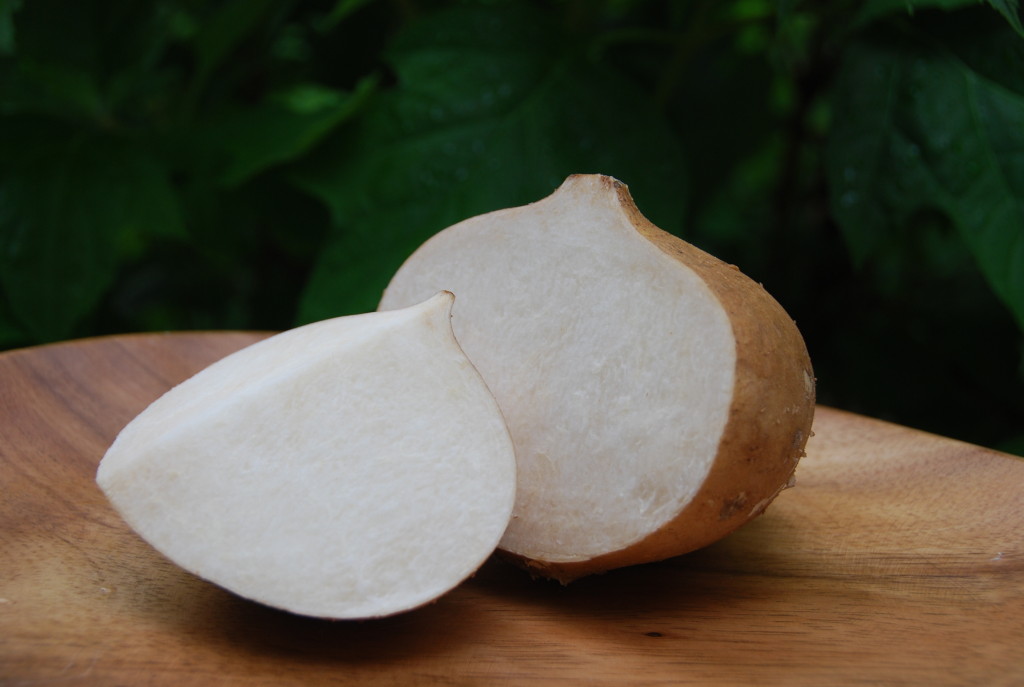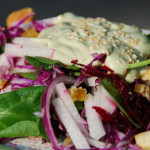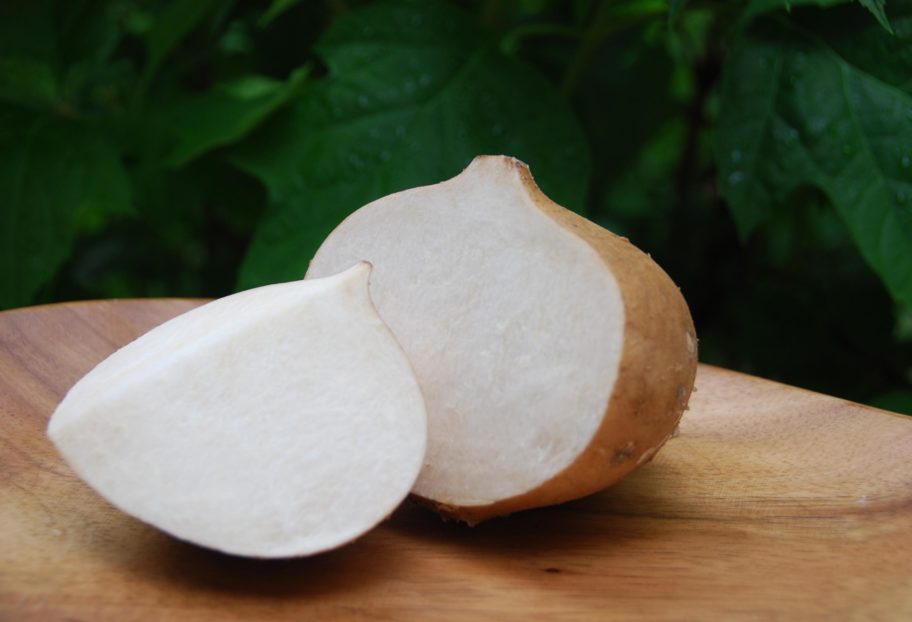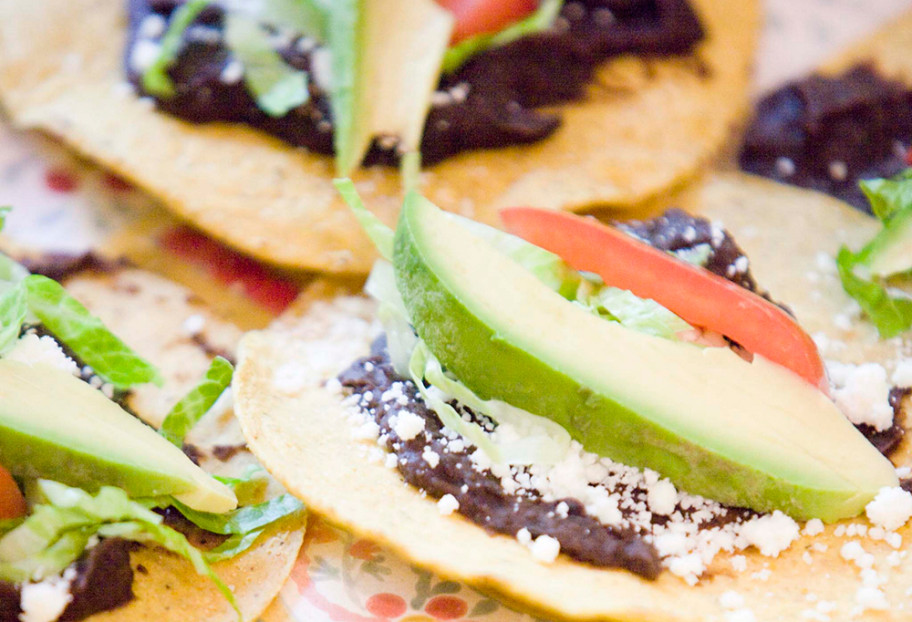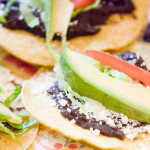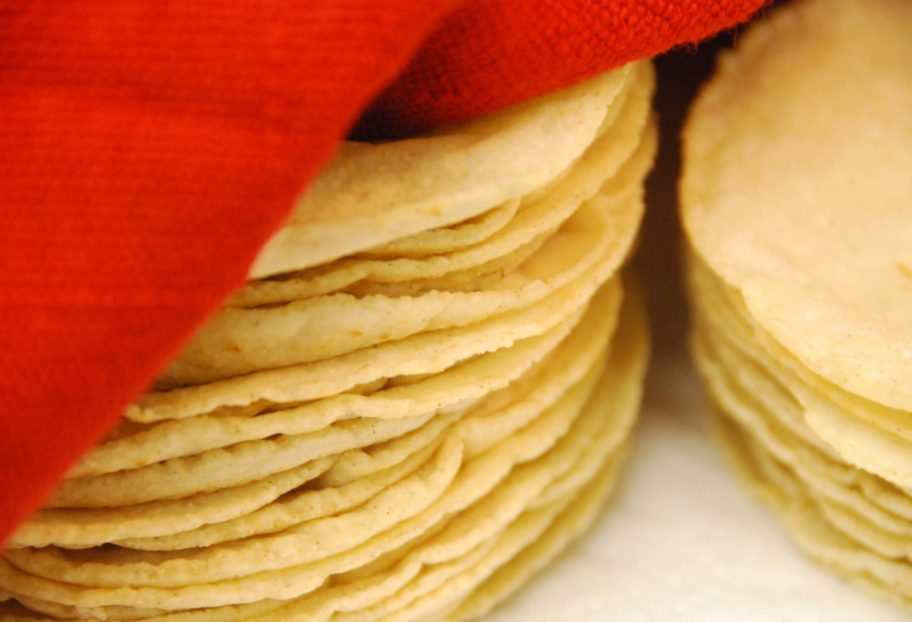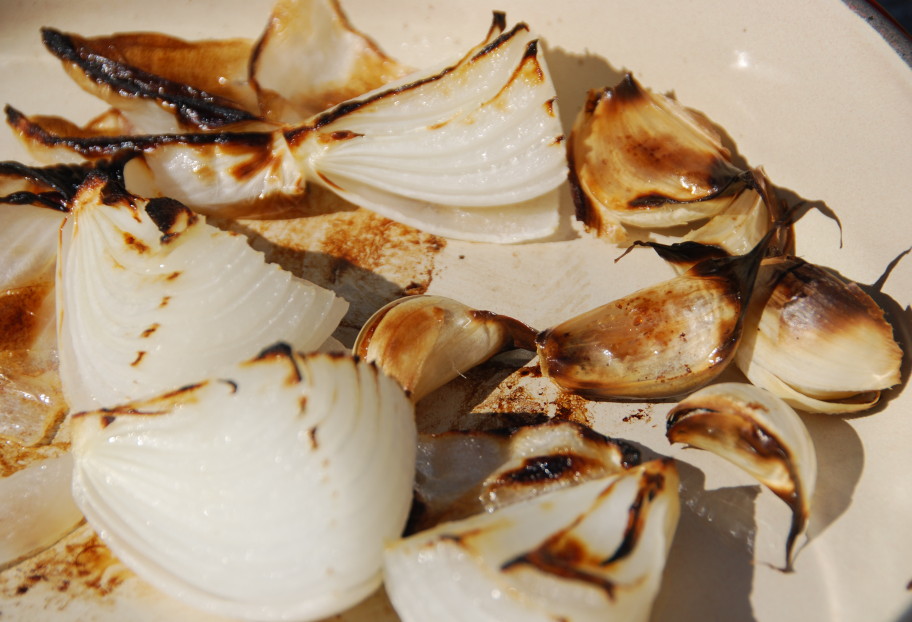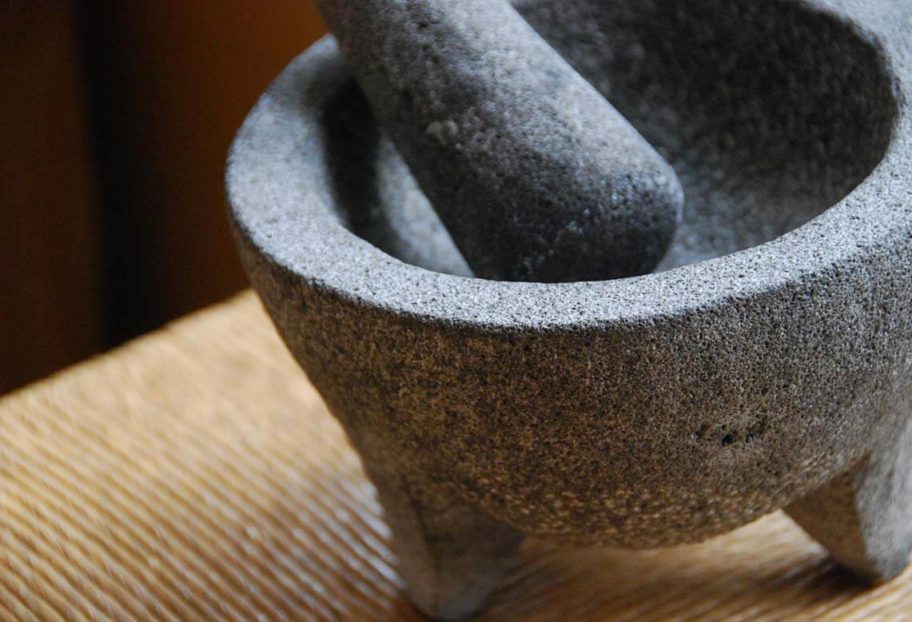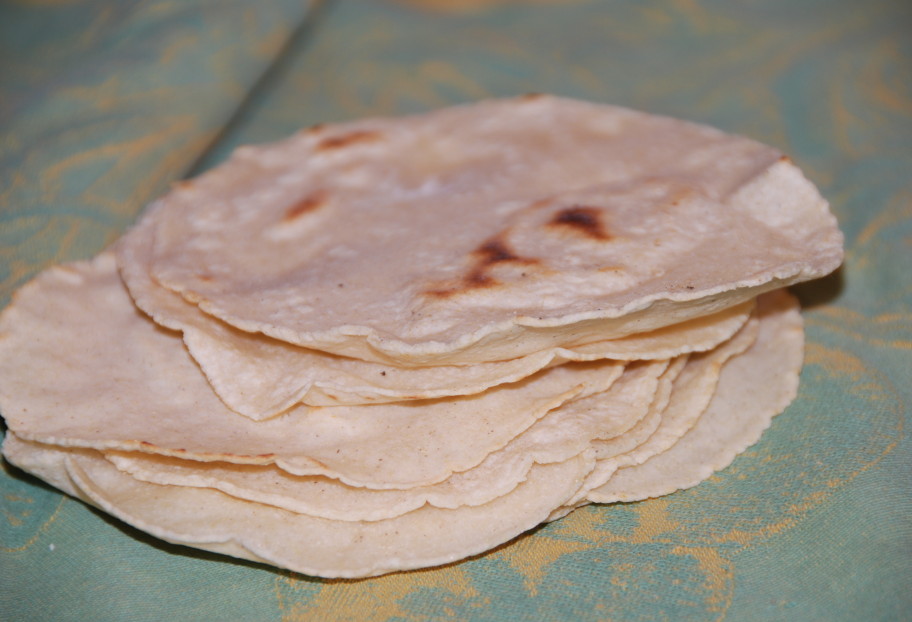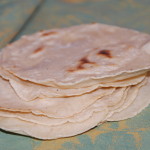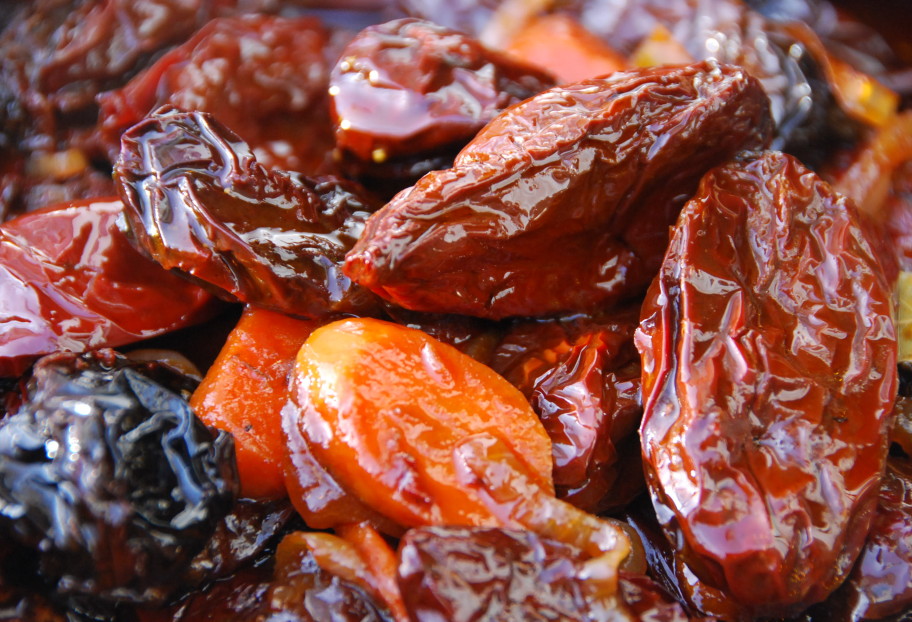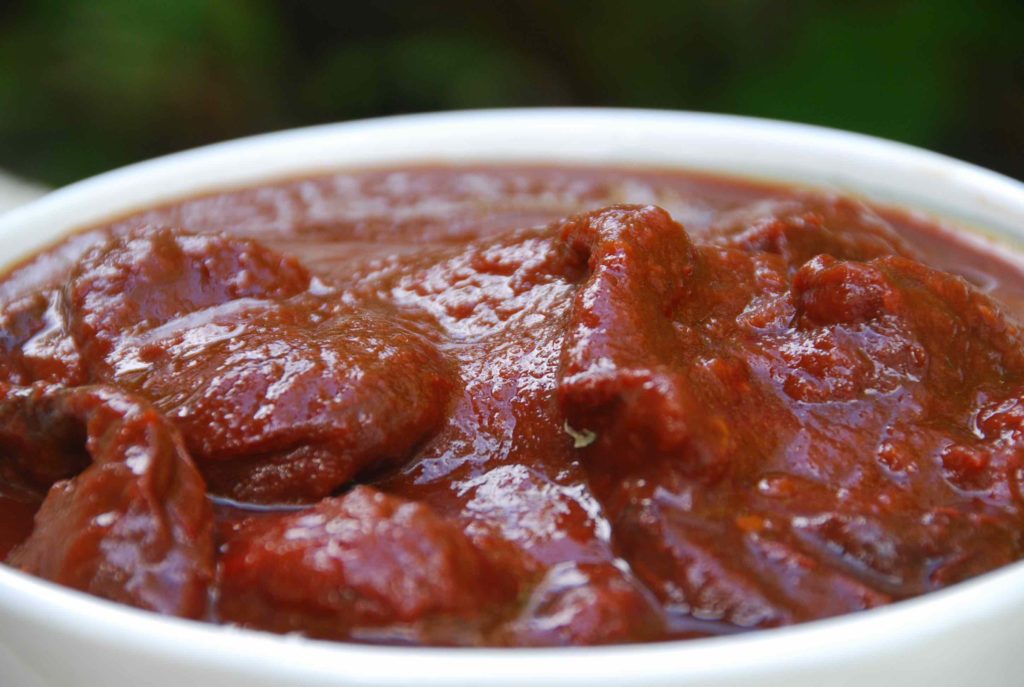I have come to realize a couple things regarding a group get together around here…
For one thing pot lucks are so popular. Maybe it’s because they can make entertaining easier and promote a warm feeling of collaboration. I don’t remember many pot luck meals growing up in Mexico. It was generally assumed that the host was in charge of the whole meal and guests arrived with a box of chocolates, a bunch of flowers, or maybe a bottle of wine or tequila too. So that pot luck pitching in element, has been such a nice surprise.
Secondly, no potluck seems to be complete without a salad, which seems to represent the wholeness of a meal and that higher degree of healthfulness. They aren’t always that fat-free. But in any case, they help reduce the guilt we all may feel after indulging in a couple of servings of whatever decadent dish may happen to be there too.Now I just can’t remember having a salad growing up, come what may, in every gathering either. There were vegetable sides, but not always salads. When there were, they either had a welcome exotic twist, or a to die for “secret” house vinaigrette. And yes! The host would spell out the “secret” with any given opportunity.
As much as pot lucks are based on great principles, they can be damaged if participants think that whatever they bring works out well, just because they are bringing “something.” But here’s the thing, you are not helping much if the main dish is an Indian curry and the salad you walk in with has a creamy, garlicky and heavily parmesanned dressing.
Two ideas come to mind to try make that next pot luck a success. One, someone can be in charge of informing everyone of what others are planning to bring with a bit of detail. If that seems like a hassle, then pick a theme. Just to make sure there are no guns and roses on the table. Another idea, goes to the salad bearer. Instead of a premixed salad bag splashed with a random bottled vinaigrette, why not make a flavorful, exotic and wholesome salad? This will pump up the quality of the meal, make the health-minded happier and give the salad maker a ton more satisfaction.
Here, let me give you a salad that you can brag about and then happily devour. One of the most popular salads I have shared in class, it has also prompted a next day email to ask for the recipe whenever we have served it to friends at home. If you bring it to your next pot luck, it will make that table where you set it on, wish it had a mouth to eat it all up.
The original recipe comes from María Dolores Torres Izabal, one of the leading ladies of the Mexican culinary world and a woman I admire so. As the years have passed, I have adapted it.
Just the combination of ingredients is exciting enough. It has the depth of the spinach, the tanginess and strong color of the raw beets, the crispness of the typically ignored cabbage, the sharpness of the red onion, the sweetness and chewiness of the dried pineapple or acitrón, and the wonderful crunch, and clean and fresh feel of the jícamas.
I found the freshest jícamas today, as you can see in the picture above…though the weather didn’t help much for a good picture (I need a lot more help than a sunny day for that…)
This mix of ingredients is first lightly covered in a light oil and vinegar dressing, just to get ready for a luxurious embrace from the creamy Mexican avocado sauce. Now add the flavor of toasted sesame seeds and the satisfying bite you get out of the croutons…. Just can’t go wrong.
Oh… and it is practical too, since everything can be prepped at least a day ahead, refrigerated and assembled before serving.
Rosura Salad
Ingredients
Vinaigrette:
- 1/4 cup tarragon vinegar
- 1 garlic clove pressed or finely chopped
- 2 tablespoons finely chopped white onion
- 1 tablespoon kosher or sea salt
- 1 teaspoon sugar
- 1/4 cup olive oil
- 1/4 cup vegetable oil
Avocado dressing:
- 1 cup milk
- 1 garlic clove
- 2 tablespoons fresh lime juice
- 1 cup Mexican crema
- 2 ripe avocados
- 1 tablespoon kosher or sea salt or to taste
- 1 tablespoon finely chopped chives
To serve:
- 5 cups (or about 1 pound) thinly sliced red cabbage
- 3 cups peeled and shredded raw beets from about 2 beets
- 5 cups (or about 8 ounces) spinach rinsed and thinly sliced
- 5 cups jícama peeled and cut into small sticks (from about 1 jícama)
- 1/4 of a white onion thinly sliced
- 3 ounces candied pineapple or other candied fruit
- 1 cup croutons
- 1/2 cup lightly toasted sesame seeds
Instructions
For the vinaigrette:
- Add the vinegar, garlic, chopped onion, salt, and sugar to a small bowl, then whisk in the oils to emulsify.
For the avocado dressing:
- Place milk and garlic in a blender and puree. Add the lime juice, crema, avocados and salt to taste and blend until smooth. Pour avocado dressing in a bowl and stir in the chives.
To serve:
- Combine the cabbage, beets, spinach, jícama, onion and dried pineapple or dried fruit in a salad bowl.
- Lightly dress the salad with some of the vinaigrette. Place the salad on the table and leave the avocado dressing, croutons and toasted sesame seeds on the side for people to add as they please.

